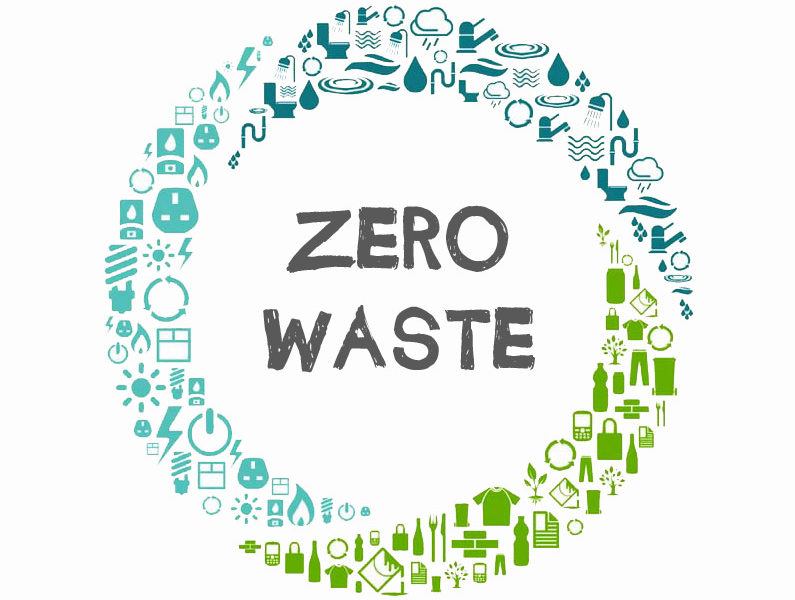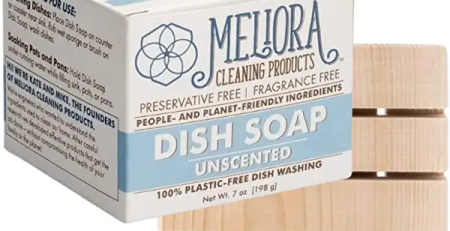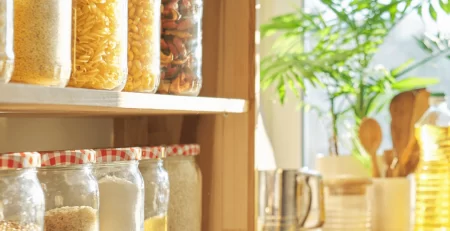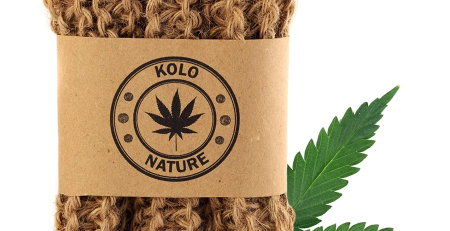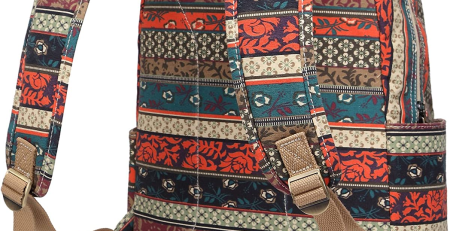How to Start Zero Waste Living: A Step-by-Step Guide
Living an environmentally conscious lifestyle has become increasingly important in today’s world.
As we face the challenges of climate change, pollution, and resource depletion, adopting eco-friendly practices such as zero waste living has gained significant attention.
By making conscious choices to reduce waste and embrace sustainable alternatives, we can minimize our impact on the environment and create a more sustainable future.
In this step-by-step guide, we will explore how to start your journey towards zero waste living. From understanding the environmental implications of waste to decluttering, rethinking shopping habits, and embracing sustainable practices, this guide will provide you with practical steps to incorporate eco-friendly choices into your everyday life. So, let’s dive in and embark on this rewarding journey towards a greener, more environmentally responsible lifestyle.
- Explore room decor ideas and home decor tips in our article on room decor ideas including home decor tips.
- Stay updated with the latest trends for bathroom decor in our guide on latest trends for bathroom decor.
Step 1: Educate Yourself about Zero Waste Living
To begin your journey towards zero waste living, it is crucial to educate yourself about the principles and practices of this eco-friendly lifestyle.
By understanding the environmental impact of waste and learning from successful zero waste stories, you can lay a solid foundation for your own sustainable journey. Here are some key steps to educate yourself about zero waste living:
- Research and Learn: Take the time to research and explore the concept of zero waste living. Read books, articles, and blogs on the subject to gain a deeper understanding of the environmental challenges caused by waste and the potential solutions offered by zero waste practices. Familiarize yourself with key terms such as recycling, composting, minimalism, and sustainable consumption.
- Join Online Communities: Engage with like-minded individuals by joining online communities dedicated to zero waste living. Participate in forums, social media groups, and online discussions to connect with experienced zero wasters, ask questions, and learn from their experiences. These communities provide a valuable platform for sharing ideas, tips, and inspiration.
- Attend Workshops and Events: Look for local workshops, seminars, or events focused on zero waste living. These gatherings often feature experts, speakers, and practitioners who can provide valuable insights and practical tips. Workshops may cover topics such as waste reduction strategies, composting techniques, and DIY zero waste alternatives. Participating in these events allows you to expand your knowledge and network with others on the same sustainability journey.
- Follow Zero Waste Influencers: Follow influential bloggers, vloggers, and social media accounts that specialize in zero waste living. These individuals often share their experiences, tips, and hacks for reducing waste and leading a more sustainable lifestyle. Their content can provide you with inspiration, creative ideas, and practical guidance on your zero waste journey.
- Experiment and Learn from Mistakes: Embrace a mindset of continuous learning and experimentation. Zero waste living is a process, and it’s normal to encounter challenges along the way. Be open to trying new methods, adjusting your approach, and learning from any mistakes or setbacks. By being adaptable and willing to learn, you can refine your zero waste practices and find what works best for you.
- Learn about different types of pampas grass and their characteristics in our informative article on types of pampas grass and their characteristics.
- Get inspired by boho pampas grass decor ideas in our article on boho pampas grass decor ideas.
Step 2: Assess Your Current Waste Habits
To effectively transition to a zero waste lifestyle, it is essential to assess your current waste habits.
This step allows you to understand the environmental impact of your daily choices and identify areas where you can make the most significant eco-friendly changes. Here’s how you can assess your waste habits:
- Conduct a Waste Audit: Begin by conducting a waste audit to evaluate the types and quantities of waste you generate. Take a close look at your household’s trash and recycling bins over a designated period, such as a week or a month.
- Categorize the waste into different types, such as plastic, paper, food waste, and packaging materials. This audit will give you a clear picture of your current waste generation patterns.
- Identify Problem Areas: Analyze the waste audit results to identify the areas where you produce the most waste. It could be excessive packaging from online shopping, food waste from not utilizing groceries effectively, or disposable products commonly used in your daily routine. Recognizing these problem areas will help you prioritize and focus your efforts on reducing waste in the most impactful areas.
- Analyze Consumption Patterns: Examine your consumption habits and identify areas where you can make changes to reduce waste. For example, do you frequently buy single-use plastic water bottles instead of using a reusable one? Are you prone to impulse purchases or excessive packaging when shopping? Understanding your consumption patterns will highlight areas where you can make conscious choices to minimize waste.
- Set Goals for Waste Reduction: Based on your waste audit and analysis, set realistic goals for waste reduction. These goals could be as simple as reducing plastic packaging waste, composting food scraps, or eliminating disposable items from your daily routine. By setting specific and achievable goals, you can track your progress and stay motivated throughout your zero waste journey.
- Track Progress: Regularly monitor and track your progress in waste reduction. Keep a journal, spreadsheet, or dedicated app to record your waste reduction efforts. This tracking will help you visualize the positive impact you’re making and identify areas where further improvement is needed.
Assessing your current waste habits is a vital step in adopting a zero waste lifestyle. It allows you to understand your environmental footprint and target areas for improvement.
By conducting a waste audit, identifying problem areas, analyzing consumption patterns, setting waste reduction goals, and tracking progress, you can lay the groundwork for implementing effective eco-friendly strategies and making significant strides towards a zero waste future.
- Discover tips and ideas for pampas decoration in our article on tips and ideas for pampas decoration.
- Explore other pampas grass decor ideas for weddings in our article on other pampas grass decor ideas for weddings.
- Find creative ways to incorporate pampas grass in weddings with our article on pampas grass in weddings decor ideas.
Step 3: Setting Realistic Goals for Your Zero Waste Journey
- Define Your Vision: Begin by envisioning what a zero waste lifestyle means to you. Consider the level of waste reduction you aim to achieve and the impact you want to make on the environment. Your vision will serve as a guiding principle and a source of inspiration as you set your goals.
- Identify Specific Areas: Break down your goals into specific areas where you can make a significant impact. For instance, you might focus on reducing plastic waste in the kitchen, minimizing packaging waste from online shopping, or composting food scraps. By identifying specific areas, you can direct your efforts more effectively.
- Be Realistic: Consider your current lifestyle, commitments, and limitations when setting your goals. Avoid overwhelming yourself with drastic changes that may not be sustainable in the long run. Start with small, achievable goals and gradually increase their scope as you become more comfortable with the zero waste practices.
- Make Goals Measurable: Ensure that your goals are measurable, so you can track your progress and evaluate your success. For example, instead of a vague goal like “reduce waste,” set a specific target like “reduce plastic waste by 50% in three months.” Measurable goals provide clarity and allow you to celebrate milestones along the way.
- Set a Timeline: Assign a realistic timeline to your goals to create a sense of urgency and maintain momentum. Determine specific timeframes for achieving each goal, whether it’s a week, a month, or a year. Breaking your journey into manageable increments will make it easier to stay focused and motivated.
- Prioritize Impactful Goals: Identify the goals that will have the most significant environmental impact and prioritize them. Focus on areas where you can make substantial changes and where waste reduction efforts align with your values and interests. This way, you can maximize your efforts and generate meaningful results.
- Adapt and Evolve: Keep in mind that goals may need adjustment along the way. As you progress on your zero waste journey and gain experience, you may discover new opportunities or encounter unforeseen challenges. Stay flexible and be willing to adapt your goals as needed to ensure continued progress.
- Discover 20 essential kitchen tools and equipment in our article on 20 kitchen tools and equipment.
- Explore budget-friendly bathroom sets with our article on 20-piece complete bathroom set.
- Access a comprehensive checklist of 100 kitchen essentials for cooking in our article on 100 kitchen essentials checklist.
- Explore a variety of home and kitchen products in our article on home and kitchen products.
Step 4: Declutter and Simplify for a Zero Waste Lifestyle
- Evaluate Your Belongings: Begin by taking a critical look at your belongings. Assess each item and ask yourself: Do I use it regularly? Does it bring me joy? Is it essential to my daily life? Be honest with yourself and consider whether each item aligns with your zero waste goals and values.
- Embrace the KonMari Method: Consider using the popular KonMari method, developed by Marie Kondo, to guide your decluttering process. The method involves holding each item and asking yourself if it sparks joy. If an item no longer brings you joy or serves a purpose, thank it for its service and let it go.
- Practice Mindful Donations or Selling: Items that no longer serve you can find new life with someone else. Consider donating them to local charities, shelters, or thrift stores. If you prefer to recoup some of your investment, you can sell items through online platforms or have a yard sale. Ensure that the items you donate or sell are in good condition and can be useful to others.
- Minimize Packaging Waste: When decluttering, pay attention to the packaging and materials used for your belongings. Opt for products with minimal or eco-friendly packaging in the future. Dispose of packaging waste responsibly, recycling or reusing it whenever possible.
- Adopt a Minimalist Mindset: Embrace a minimalist mindset to reduce future consumption. Focus on quality over quantity and be intentional with your purchases. Consider the long-term value and durability of items before bringing them into your home. By reducing unnecessary purchases, you can prevent future clutter and waste.
- Organize and Optimize Storage: As you declutter, take the opportunity to organize and optimize your storage spaces. Invest in storage solutions that work for your specific needs, making it easier to keep your belongings tidy and accessible. Well-organized spaces not only promote a sense of calm but also make it easier to identify what you already have, minimizing the chances of unnecessary purchases.
- Practice the One-In-One-Out Rule: To maintain a clutter-free and waste-minimized environment, adopt the one-in-one-out rule. Every time you bring a new item into your home, commit to removing an existing item. This rule helps prevent the accumulation of unnecessary possessions and encourages mindful consumption.
- Discover DIY room decor ideas for the kitchen and dining room in our article on kitchen dining room DIY room decor ideas.
- Find essential cookware recommendations in our article on kitchen essentials cookware.
- Access a comprehensive list of kitchen essentials in our article on kitchen essentials list.
- Discover a list of kitchen household items in our article on kitchen household items list.
Step 5: Rethink Your Shopping Habits “zero waste
Adopting a zero-waste lifestyle involves rethinking your shopping habits and making conscious choices to reduce waste. Here are some steps you can take to minimize waste while shopping:
- Make a shopping list: Plan your purchases in advance by creating a detailed shopping list. This helps you stay focused and avoid impulse buying, reducing the chances of accumulating unnecessary items.
- Buy in bulk: Whenever possible, choose to buy products in bulk. Bulk bins and stores allow you to bring your own containers, reducing packaging waste. This approach also saves money in the long run since bulk items often cost less per unit.
- Carry reusable shopping bags: Bring your own reusable bags whenever you go shopping to avoid using plastic or paper bags provided by stores. Keep a stash of reusable bags in your car or carry a foldable bag in your purse or backpack so that you’re always prepared.
- Choose products with minimal packaging: Opt for products with minimal or no packaging. Look for items that are packaged in recyclable or compostable materials. Buying loose produce instead of pre-packaged ones is another way to reduce waste.
- Avoid single-use items: Say no to single-use items such as disposable utensils, straws, water bottles, and coffee cups. Instead, carry your own reusable alternatives like stainless steel cutlery, a reusable water bottle, and a travel mug.
- Shop secondhand: Consider buying secondhand items whenever possible. Thrift stores, online marketplaces, and community swap events are great places to find gently used clothing, furniture, electronics, and more. By giving used items a new life, you prevent them from ending up in landfills.
- Support sustainable brands: Look for brands and companies that prioritize sustainability and eco-friendly practices. Research their packaging, materials, and production processes to ensure they align with your values. Support local businesses that offer sustainable and zero-waste products.
- Compost organic waste: If you have access to composting facilities or have space for a home composting system, compost your organic waste such as food scraps and yard trimmings. This diverts waste from landfills and provides nutrient-rich soil for your garden.
- Repair and maintain items: Instead of immediately replacing broken or damaged items, explore repair options. Repairing or refurbishing products extends their lifespan, reducing the need for new purchases and minimizing waste.
- Share and borrow: Consider sharing tools, equipment, or rarely used items with neighbors, friends, or family members. This promotes community engagement and reduces the need for everyone to individually own every item.
- Explore a list of kitchen essentials for a new home in our article on list of kitchen essentials for new home.
- Access a comprehensive list of kitchen items in our article on list of kitchen items.
- Find affordable complete bathroom sets in our article on complete bathroom sets cheap.
Step 7: Engage with the Zero Waste Community
- Attend local events and workshops: Look for zero waste events, workshops, or sustainability-focused gatherings in your area. These events often include discussions, presentations, and demonstrations on various zero waste practices. It’s an excellent opportunity to meet like-minded individuals, share experiences, and learn from experts.
- Join online communities: Participate in online platforms and social media groups dedicated to zero waste and sustainable living. These communities provide a space to ask questions, seek advice, and share your own tips and successes. You can find communities on platforms like Facebook, Reddit, and Instagram.
- Follow zero waste influencers and bloggers: Follow influential zero waste advocates, bloggers, and content creators who share tips, ideas, and inspiration for reducing waste. Their experiences and insights can motivate and guide you on your own journey. Engage with their content by leaving comments, asking questions, and sharing your own experiences.
- Participate in zero waste challenges: Take part in zero waste challenges organized by individuals, groups, or online communities. These challenges usually focus on specific waste reduction goals over a set period, such as a month. They can help you stay motivated, learn new strategies, and connect with others who are passionate about reducing waste.
- Share your experiences: Document your zero waste journey and share it with others. Start a blog, create social media posts, or share your experiences in online communities. By sharing your successes, challenges, and lessons learned, you can inspire and educate others who are also interested in reducing waste.
- Collaborate with local organizations: Reach out to local environmental organizations, community centers, or sustainability groups to explore opportunities for collaboration. You could volunteer for waste reduction initiatives, organize educational events, or contribute your skills and knowledge to their projects.
- Attend or organize zero waste swaps: Zero waste swaps are events where individuals can exchange or donate unwanted items in good condition. These can include clothes, books, kitchenware, and more. Attending a swap allows you to find new-to-you items while preventing them from going to waste. If there aren’t any swaps in your area, consider organizing one yourself.
- Engage with local businesses: Support local businesses that align with zero waste principles. Reach out to them, ask about their sustainability practices, and provide feedback on areas where they can improve. By engaging with businesses, you can help create demand for zero waste products and encourage more sustainable practices.


